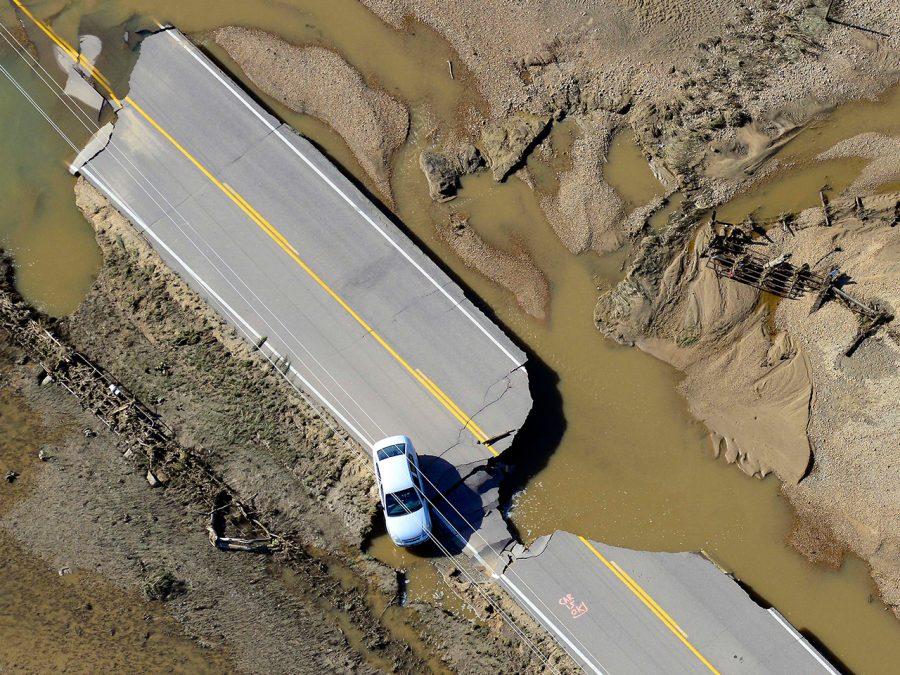On the morning of Sept. 13, Makayla Minkel, a resident of Fort Collins, CO and a freshman at Front Range Community College was awoken by police officers knocking on her door. They warned her that due to an increase in rainfall, her home would soon be completely under water. Makayla’s neighborhood was just one of the many evacuated along the Front Range due to the worst flash flood in recent history.
The Colorado Front Range consists of the area west of I-25, east of the Rocky Mountains, and north of Denver. This area includes the cities of Boulder, Loveland and Fort Collins and countless streams and rivers. Typically these waterways serve as recreational areas for many Colorado residents. Kayaking, tubing, and fishing are common pastimes, even with droughts the past few years.
Recently, the drought has been worse than ever, accumulating to wild fires that scorched across the state in the summer of 2012. Many Colorado residents were relieved when, instead of sunshine, many summer days were peppered with rain. When rain started on the evening of Sept. 11, not many residents took notice. However, within a few hours the small shower had progressed into an extreme storm.
In a typical year, the city of Boulder gets approximately 25 inches of rainfall. A majority of this rain falls in the spring, with occasional light showers or in the winter with some snow storms. However, the recent storm system dropped 18.55 inches of rain and caused approximately $150 million worth of damage within Boulder County alone.
Many New Yorkers are feeling sympathetic due to their similar experiences with Hurricane Sandy this past Fall.
Freshman Michelle Siddiqui said: “It’s scary, because it can happen anywhere.”
Minkel’s words of “[w]hat a nightmare this is” hardly begin to describe the situation. Officials have confirmed a total of 8 deaths and 1,253 people missing or unaccounted for. An estimated 19,000 homes were damaged or destroyed in an area about the size of Delaware. When Minkel was finally able to return, she found minimal damage to her home, however many of her neighbors were not as lucky. “It’s really depressing watching my neighbors get lots of water pumped out and everything ripped out of their homes, because it all got destroyed in the flood.”
Roads were washed out and some bridges collapsed. This includes Highway 34, one of the only ways to the mountain town of Estes Park, forcing evacuation of the entire area. Many roads have been shut down with no clear estimate of when they will reopen. I-25, a highway that runs from Canada to Mexico, and serves as a major artery for traffic in Colorado, was closed for a 12 mile stretch between Loveland and Fort Collins. Sections of the highway are still closed due to concerns about possible bridge collapses.
However, even with the wide extent of damage, many people are hopeful. With the assistance they have already raised, clean-up efforts have begun and life is returning to normal. After closing campus for four days and evacuating some of the dorms, CU Boulder has started classes again. Both Thompson School District and Poudre School District in Loveland and Fort Collins have also reopened a majority of their schools.
Many organizations all across the nation are flocking to Colorado to help with recovery efforts. People all across the state are helping where they can, such as Boulder resident Jenna Jorgensen who offered her home to those who had lost theirs. When asked about her generosity she simply stated, “What matters is that we are all safe.”
Even with the countless heartwarming stories arising from the area, there’s still a long journey ahead. Colorado’s Flood Decision Support System tweeted, “We’re not out of the woods yet.” The Great Colorado Flood Relief Fund is currently selling shirts and stickers at www.coloradorelieffund.com to help raise funds to assist those affected by the floods. It was also granted non-profit status by PayPal, so people all across the nation can quickly and easily make donations.
“I think whenever a national disaster happens, it’s important that we band together. People all across the nation donated when Sandy hit, we should do the same for Colorado,” said University freshman Tara McCauley.







